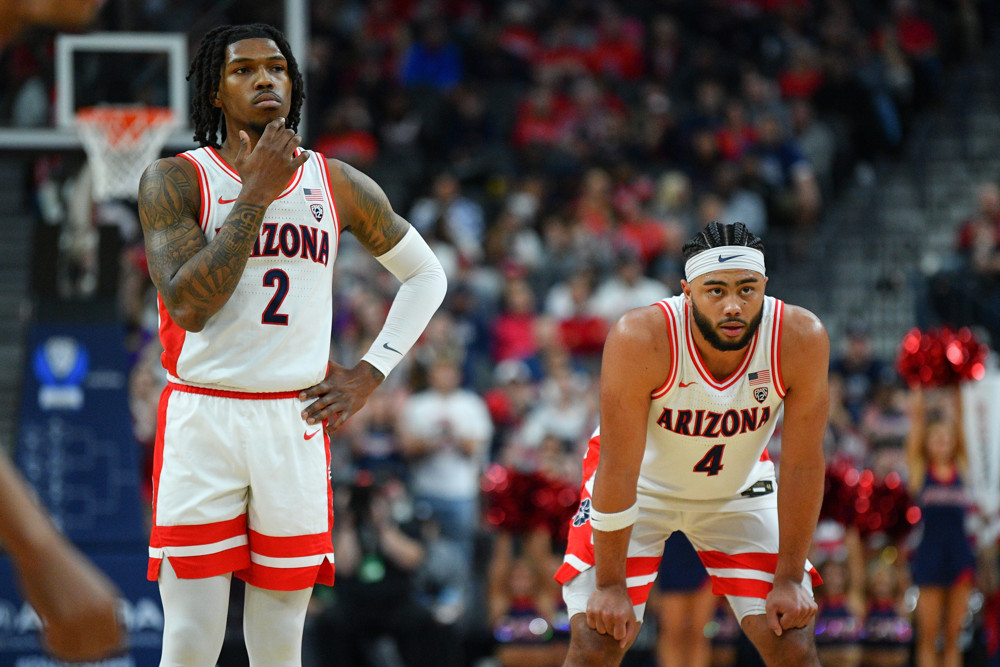March Madness is consistently one of the biggest gambling events of the year. There are just so many ways to get skin in the game: betting spreads or totals, player props, tournament props, or simply filling out a bracket. These markets all have varying levels of efficiency and various levels of strategy needed to beat them. Today, we’ll walk through different ways to bet on March Madness, whether they’re worth betting for your average person, and what it takes to beat them.
DIFFERENT WAYS TO BET MARCH MADNESS
- Normal betting markets (money lines, spreads, totals, game props) – This is the stuff you see everywhere. You can also bet on first-half spreads, money lines, and totals, as well as props like first team to 10 points.
- Tournament props – Tournament props are markets like over/under of the worst seed in the Final Four or the odds that all four No. 6 seeds will win their first game. Different books will have vastly different offerings, but there’s usually a fairly robust menu of these across all books, and more will be added as the tourney progresses.
- Player props – College basketball player props aren’t widely available for most of the year, but they’re everywhere for the NCAA Tournament. Points, rebounds, assists, and 3-pointers made are pretty standard offerings, but some books will also have stuff like PRA, steals, and blocks. College player props are also available on fantasy pick’em sites like PrizePicks and Underdog. Note these are not legal in every state.
- Filling out a bracket – If you’re reading this article, you know what it means to fill out a bracket. Pick the winner of all 63 games starting in the Round of 64 and ending with the national title game. We have an article on March Madness bracket strategy available here.
- Calcutta – A Calcutta is an auction where each participant bids to acquire the rights to a team and then gets points based on how those teams do in the tournament. It’s likely the least popular of the five gambling possibilities we have listed so far, but they are still readily available if you look around, and many of these Calcuttas play for big stakes. You can read more about Calcuttas here.
WHAT SHOULD I BET ON?
- Normal betting markets (money lines, spreads, totals, game props) – Since these are offered all season long, they are the most efficient betting markets for March Madness. They’re still beatable, but you should be aware that there are plenty of people who bet this stuff for a living. Furthermore, March Madness brings the highest limits of the college basketball season, so these numbers are generally as efficient as college basketball markets get. Game props (e.g., 1H totals or similar) will be most beatable, but unless you have a fairly sophisticated process, there are probably better ways to find action on the NCAA Tournament. There is coverage everywhere on best bets, systems that can’t fail, comparing KenPom lines to betting lines, but at the end of the day, the best course of action for the vast majority of people is to assume these lines are fair and find another way to get action. With that being said, there’s nothing wrong with betting these if you realize you likely don’t have an edge. Gambling can be a form of entertainment, and there’s nothing wrong with betting within your means to make the games more interesting; just realize your expected ROI is in the -4% range.
- Tournament props – These are definitely less efficient than more major markets but probably more efficient than player props. Different books may have pretty different numbers on similar props, so it’s worth shopping around for the best number for these. The more obscure, the better with tournament props. You can find odds to make the Sweet 16 everywhere and most books will have pretty similar lines. But if you can find stuff like most points scored by a single player in the tournament or how many game-winning shots will there be, you can probably find some inefficiencies.
- Player props – With 68 teams in the tournament, usually at least four different categories (points, rebounds, assists, 3-pointers made, and sometimes more), and props for multiple players per team, it’s basically impossible for the books to set efficient numbers on everyone. With that in mind, player props are the best way for the average person to bet on the tournament on sportsbooks. It’s not like it’s free money, but I feel confident the average person could not beat money lines, spreads, and totals. They could beat CBB player props if they really put their mind to it.
- Filling out a bracket – Assuming you’re in a normal bracket pool where only the top few finishers get paid out, you may not actually realize the positive expected value, but bracket competitions may have the biggest edge depending on who you’re playing against. If you’re in an office pool or playing against your homer friends, that’s a massive +EV spot if you put some time into your bracket. If it’s a high-stakes contest against DFS and betting veterans, you may not have the same edge, but the potential for others to make mistakes is still higher than average given this is a once-per-year event. I wrote an article detailing optimal bracket strategy, and ETR also has a podcast out with TeamRankings’ Jason Lisk.
- Calcutta – Full disclosure: I haven’t played many Calcuttas, but they’re very popular this time of year. Our friends at Unabated have a great article detailing Calcutta auction strategy. Like with brackets, who you’re playing against is going to be key here. If you’re playing with experienced Calcutta sharps, you may not have a good time, but the EV could be massive if you’re playing against fish.


